I last visited Berlin in September 2019. Although my mother is originally from the DDR, the former East Germany, I did not set foot in the once divided capital of my motherland until I was in my early twenties. Since then I have done my best to make up for lost time and memories, returning on more than a handful of occasions.
Being the mercurial organism that it is, I would not dare claim to know the city well but I am familiar enough with the place to have developed a preferred, albeit somewhat rudimentary, routine while I am there. In essence, said routine comprises of nothing more than a lot of wayfaring, beer in hand. You see, in contrast to many of its neighbours (including the Netherlands…), drinking alcohol in public is not only legal but very common in Germany.
A Surplus of Convenience Stores
The streets of Berlin itself are dotted with a surplus of Späti’s (short for Spätkauf or “late purchase”) – little convenience stores that mainly stock beer, spirits, tobacco and snacks and, as you may have already suspected, tend to operate at ungodly hours. One of the finer conceptions of the DDR, the Späti was initially introduced for the benefit of the proletariat coming home from a late shift but the phenomenon gradually expanded westward following German re-unification in 1990.
In contemporary times, Späti’s fulfil a fundamental role in Berlin neighbourhood culture, functioning as meeting points and often providing outdoor seating arrangements for customers and surrounding residents alike. These provisional terraces make for ideal pit stops when on the urban trail, even in late September, with autumn setting in.
Beer in its Purest Form
I arrived, per train, on a Thursday afternoon. Berlin was the final destination of a ten day trip during which I had also visited old friends in Copenhagen and Hamburg, respectively. Although I was keen to catch up with one or two of my local connections over the weekend, I was mainly there to rejoice in affordable beer of the highest quality – or brewed according to the principles of das Deutsches Reinheitsgebot, at the very least.
The Reinheitsgebot, meaning “purity order”, is a series of regulations that date back to the days of the Holy Roman Empire through which the ingredients that can be applied to the beer brewing process are restricted. Having undergone a long list of revisions over the past five or six centuries, basic law now states that only malted grains, hops, water, and yeast are permitted.
The order has come under scrutiny in recent years, with German craft beer lovers, brewers, and even some politicians arguing that it is impeding Germany’s adoption of global beer trends. Unfortunately, this means your average Späti is unlikely to offer much in the way of craft beer but, for what it’s worth, the Reinheitsgebot does provide assurance that any locally brewed beer you may purchase has been subjected to the incorruptible rigidity of German quality control.
The Warmest of Welcomes
I had already seen someone crack open a bottle of Beck’s on the train but refrained from falling into my standard routine straight away, opting to wait until the evening, when one of my dearest friends (and colleague, at the time…) rolled into town.
We shall call him Tobias, for that is his name, and apart from being brought into the fold, none of the events about to be portrayed are likely to tarnish his laudable reputation. As he was riding the suburban railway from Berlin’s impressive central station – a spectacle of steel and glass with the air of an airport – to Ostkreuz S-Bahn station, I was busy fraternising with a group of free thinkers exercising their privilege to hold a mobile party.
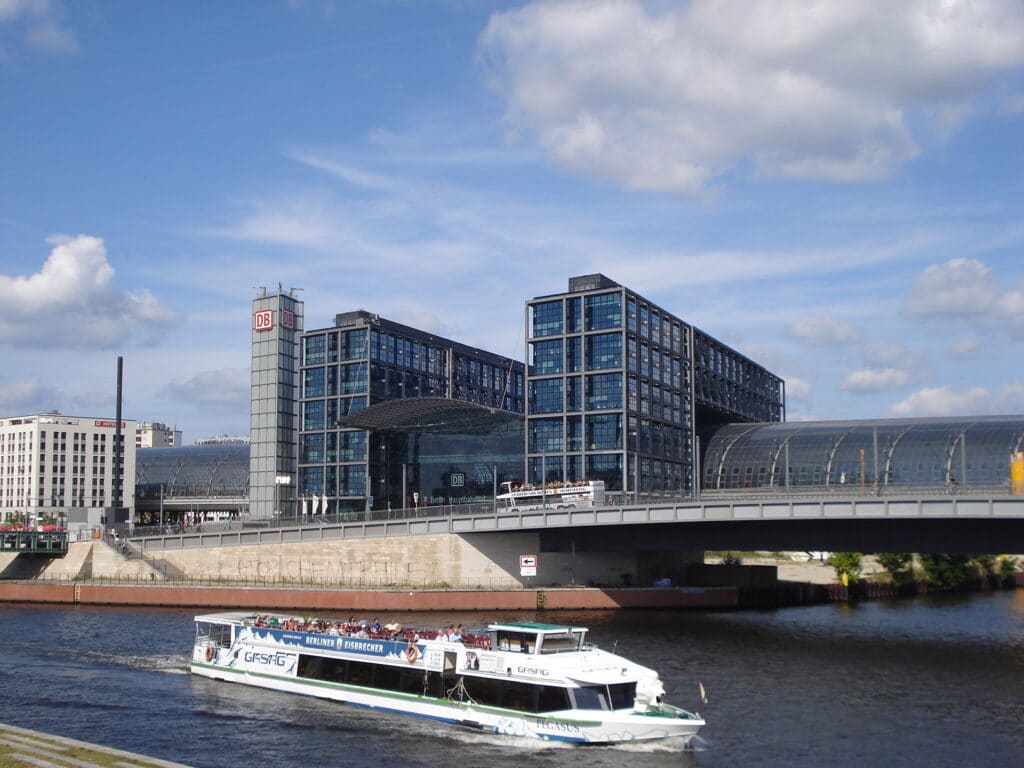
Mobile in the literal sense. A DJ was being pushed around in a four wheeled waste container that had been equipped with an amp, speakers and a set of turntables, with some twenty anti-gentrification crusaders dangling in its wake. There was even a guy in a smaller wheelie bin handing out shots. I found it to be a truly splendid initiative.
When I asked the young lady that had recruited me (whom we shall call Mate, as in yerba mate, because that is how she introduced herself…) if there was any particular reason we were partaking in this celebratory procession, she responded: “Because it’s Thursday.”
Thursday Night: The Sneak Preview
It did not take long for the impromptu parade to start disrupting traffic in the tunnel beneath Ostkreuz station and several police officers duly showed up to encourage our motley crew to keep on moving. Mate informed me that the so-called holy land of this colourful crusade, a makeshift beach bar down the road, had almost been reached and that the party would continue there.
Tobias arrived soon after, smile on his face and spring in his step. That smile only got bigger when I informed him what we were about to get ourselves into. We would end up spending a good three or four hours at the beach bar, feasting on Staropramen, which of course is not a German beer but deserves to be mentioned anyway.
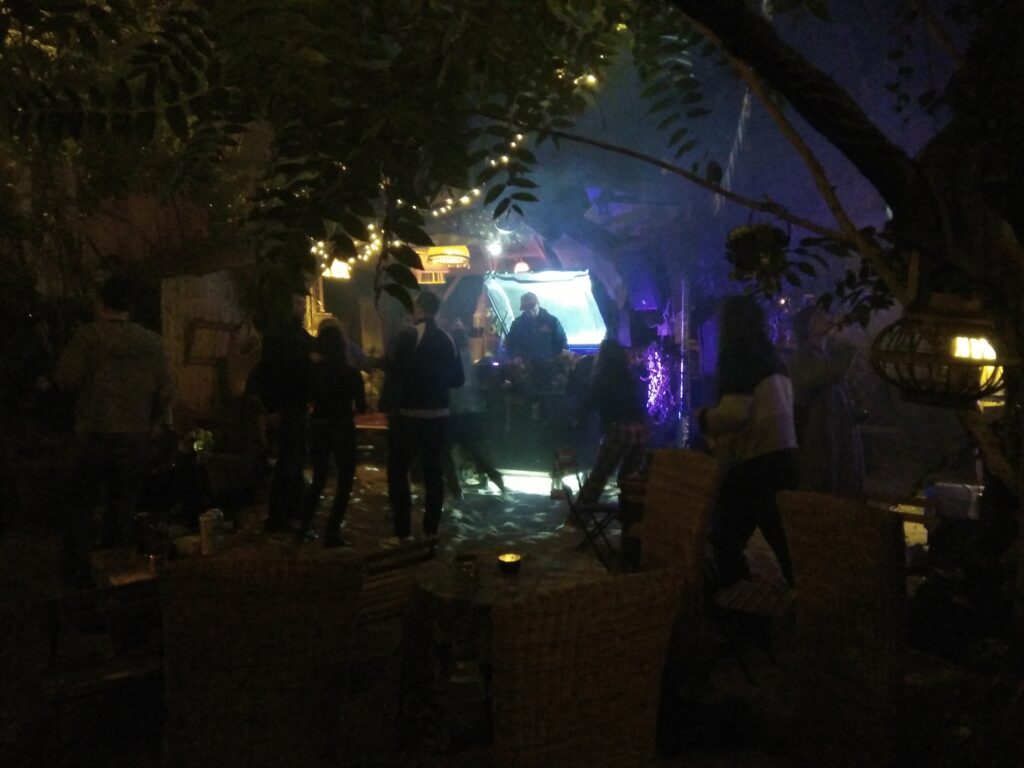
The Search for Rudi
One of the highlights of the night was a brief yet invigorating interchange with a well-groomed man dressed in a silk shirt and jeans whose face could have easily been a caricature out of MAD Magazine, its most prominent features being a large bulbous nose and Dumbo ears. He approached me in a self-assured manner and enquired whether my name was Rudi, which it is not, and then proceeded to explain how he had managed to sell his leather jacket earlier on that day and was consequently ready to party. However, it was imperative that he find Rudi first.
He turned his wide-eyed gaze to a man with blonde dreadlocks sitting on a sofa, sketching away in a notebook. I heard him call out “Hey du! Mahler! Wo ist der Rudi?”, which literally translates to “Hey you! Painter! Where is Rudi?”, and then he was gone. Our paths never did cross again but I am confident that he found what he was looking for, and more. Berlin takes care of those that help themselves.
Day 1: Friday
We arose at a reasonable hour the next day, the day in question, and left our hostel in time for brunch. The hostel was housed in a rather unsightly example of socialist modernism that had undoubtedly served as a hospital at some stage since its construction and had very little going for it but location, location, location.
Situated on the border of the districts of Prenzlauer Berg and the oddly named Fennpfuhl, both part of the former East Berlin, with an S-Bahn station on one side of the building and a tram stop on the other, we were a mere ten minute ride away from some of the city’s most iconic landmarks, including Alexanderplatz, the TV tower and Museum Island.
We headed in a different direction that morning though, strolling up Danziger Straße, across Volkspark Friedrichshain and further due north along Prenzlauer Allee. Within thirty minutes, we found ourselves standing in front of “Dicker Hermann”, or “Fat Hermann”, as residents affectionately refer to the old water tower at the heart of Prenzlauer Berg.
Prenzlauer Berg
One of Berlin’s more historic districts, Prenzlauer Berg was fortunate to have been spared the worst of the allied bombings during the Battle of Berlin in the spring of 1945 and blessed to have eluded the utopian urges of socialist city planners until the early eighties. As a result, it is characterised by Wilhelmine buildings erected at the turn of the twentieth century and, with the exception of its main thoroughfares, is still largely replete with cobble-stoned streets.
The area was heavily associated with proponents of the DDR’s diverse counterculture, such as Christian activists, bohemians, state-independent artists, and the gay community, and played a vital role in nourishing the peaceful revolution that helped bring down the Berlin Wall in 1989.
What followed was the rise of a vibrant squatting scene in the nineties and rapid gentrification in more recent times. Hence, the chances of running into Mate and the crew there were slim but Tobias had been attentive enough to exchange phone numbers with her and had asked for us to be kept in the loop of any planned or ongoing intemperance.
Phantom Bordelines
After enjoying a hearty meal at one of the countless trendy cafés in the direct vicinity of Fat Hermann, we continued strolling northward and then pivoted west in the direction of Mauerpark, the Wall Park. Located at the border of Prenzlauer Berg and the Gesundbrunnen district of former West Berlin, this park once encompassed a section of the Berlin Wall and its Death Strip, the heavily guarded no-man’s land between the inner and outer walls.
Yes, two walls, divided by almost one-hundred-and-fifty metres of raked sand or gravel, rendering footprints easy to notice. Not that there was any cover to begin with; the wall guards always had a clear shot from their towers. The bastards.
An eight-hundred meter stretch of this physical and ideological barrier has been preserved as a monument in Mauerpark, which is definitely worth a visit but was not on our itinerary that day. We were on our way to Tobias’ favourite second hand book store, entering just in time to avoid another early autumn shower.
As soon as the skies had cleared, we aimlessly trudged south via Brunnenstraße. There and then, I decided it was about time for a beer. Thankfully, there was a Späti in sight, allowing me to treat myself to a Flensburger to go.
Flensburger Pils
Flensburger Pilsener is a straightforward German pils; solid in its simplicity, easy to drink, suitable for every season and almost any meal. It is sold in brown glass bottles with a traditional swing-top opener that makes an immensely satisfying “plop” sound when released. The fact that this opener can be re-fastened after every sip means that Flensburger is perfect for on road consumption.
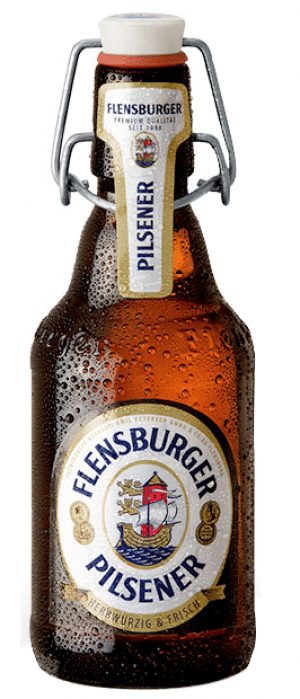
Hailing from the northern town of Flensburg, nestled at the end of an inlet of the Baltic Sea approximately ten kilometres south of the Danish border, this pils is produced by one of the last remaining independent breweries operating nationwide in Germany. Founded in 1888, the brewery has access to its own private well sourced by an underground vein of crystal-clear Ice Age meltwater.
Unable to marvel at its bright golden colour through the thick brown glass of my bottle, I intently savoured the smells of mildly doughy, grainy malt and slightly grassy hops before surrendering to a glorious flow of streaming carbonation. Subtle citrus accents, reminiscent of lemongrass, revealed themselves and were eventually escorted away by the profound bitterness of the finish. It was exactly what I needed.
Berlin Mitte
We continued southward with renewed vitality and it did not take us long to reach the area surrounding Rosenthaler Platz in Mitte, the capital’s central borough. One of two boroughs that were once split between East and West Berlin (the other being Friedrichshain-Kreuzberg…), Mitte encompasses Berlin’s historic core and many of its most important tourist sites.
From where we stood, another important site was visible. A five-storey building with a facade adorned in huge, neatly painted white letters that shout: “Dieses Haus stand früher in einem anderen Land.” This house once stood in another country. And then in smaller white letters, right beneath the roof gutter: “Menschlicher Wille kann alles versetzen”, which roughly translates to “Human will can overcome anything.”
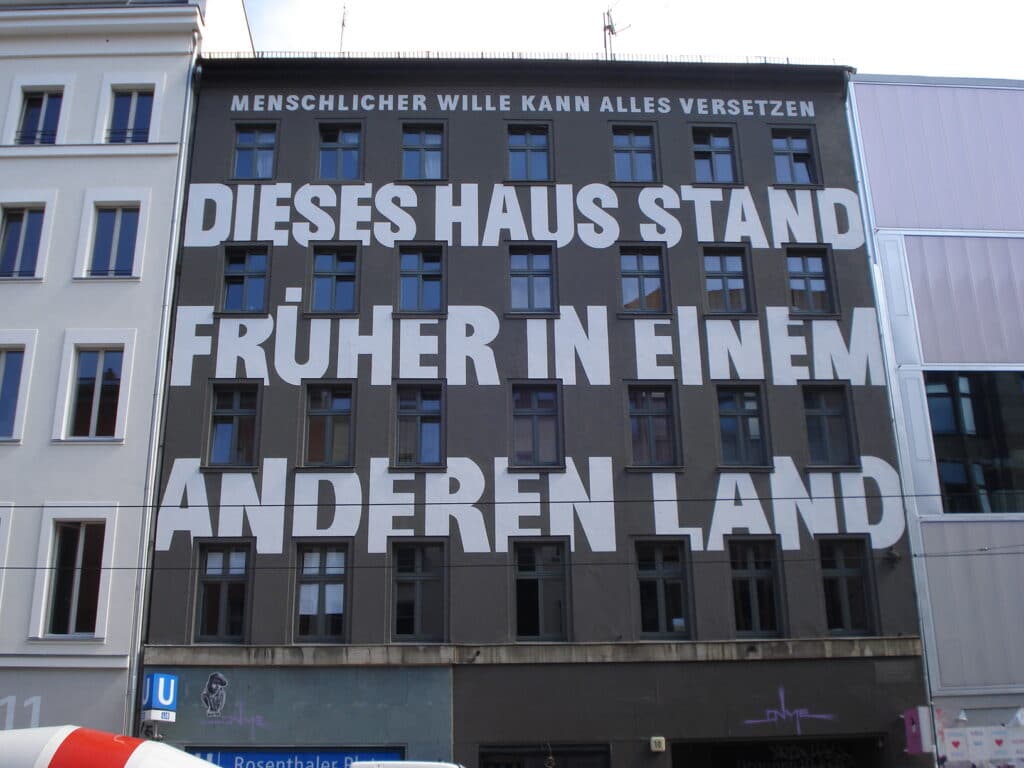
On every occasion I have stood in front of that building, I have been inspired by those words of empowerment and solidarity. The story of Berlin, no longer the divided city, offers a glimmer of hope for the future of humankind, I told myself again that day. Sadly, that conviction generally fades far too quickly as soon as I continue walking.
In any event, it had started raining again and my Flensburger was finished. Ah, lo and behold, there was a Späti with a covered seating area right across the way! Tobias agreed that it was time for a break. It was mid-afternoon and the thirst was starting to catch up with him too.
Rothaus Tannenzäpfle
Undeterred by the two giant glass door fridges solely stocked with beers of all kinds, I instantaneously reached for the row of Rothaus. Rothaus Pils Tannenzäpfle, to be exact. Tucked away in the hills of the Black Forest in the south western state of Baden-Württemburg lies the tiny village of Grafenhausen, home of the Rothaus brewery. At an elevation of close to a thousand metres, it is Germany’s highest brewery and draws upon seven mountain springs to produce its trio of beers.
Founded by an abbot in 1791 and under state-ownership for the past two centuries or so, the brewery has thrived in recent years thanks to the runaway success of the Tannenzäpfle. Meaning “little pine cones”, a reference to the shape of its bottle, this pils has garnered such a large and fanatical following that it is has been referred to as ‘cult beer’.
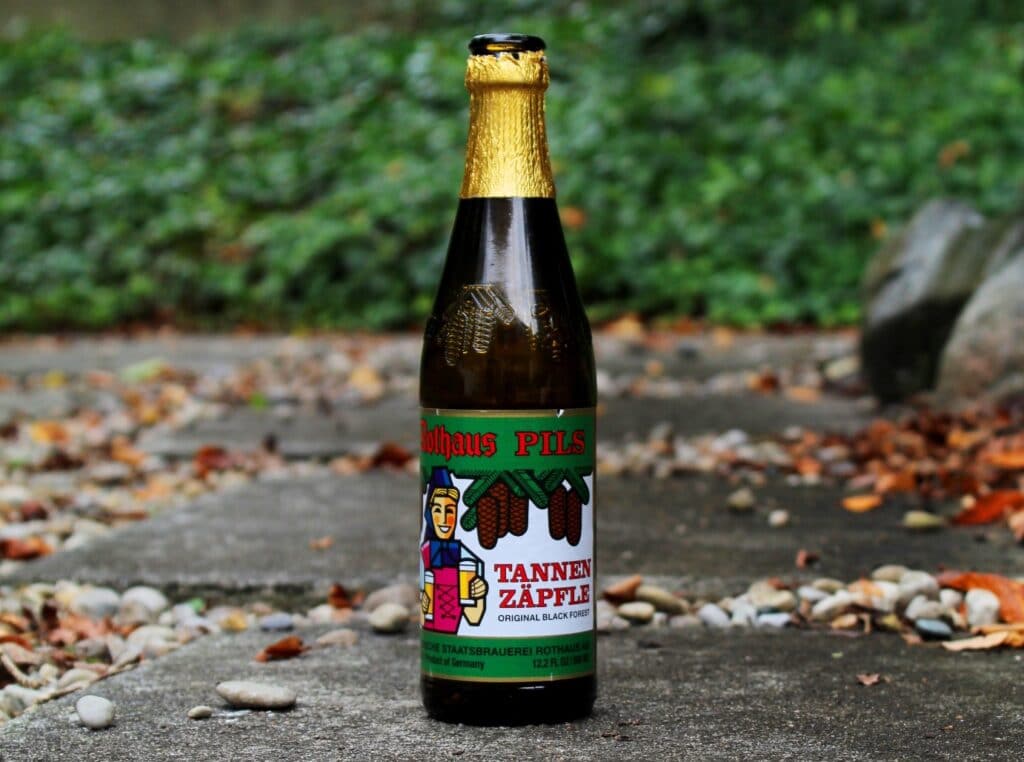
Despite a lack of intensive advertising campaigns, the demand for Tannenzäpfle’s signature smoothness and dry quality has spread throughout Germany and it is now commonly sold in kiosks and supermarkets as well as nightlife establishments. Tobias asked me to grab one for him as well.
As the rain assaulted the concrete outside our sheltered enclave with ever-growing vehemence, we were entranced by aromas of fresh bread and cut grass with a whiff of lemon. Its flavour profile is similar, moderately sweet with light malt notes and a nicely balanced grassy and hoppy bitterness to round it off. More than just another refreshing beverage, I cannot recommend this thirst-quenching elixir enough.
Killing Time
The rain would persist for another two hours, giving us plenty of time to have a few more rounds of the same and chat about this and that. We had already touched upon the tragedy of working in a customer service department over brunch, there was no use wasting any more words on that. It was our third excursion to Berlin together and it only seemed right to delve into those wonderful memories for a while.
Mate also came through with news of live performances by My Bad Sister and Ostberlin Androgyn, among others, at the Mensch Meier that night and offered to put us on the guest list if we were interested. Mensch Meier? Ostberlin Androgyn? I was not interested.
However, when Tobias – resourceful as ever – conducted a basic search on this Mensch Meier and revealed it to be a night club located a few hundred meters up the road from our hostel, I realised our fates had been sealed. Berlin was taking care of us, there was no point in resisting. I reminded Tobias that he had better notify Mate there would be three of us in attendance.
The third member of our party was due to arrive, per train, that evening. We shall call him Amadeos, because that is one of the three names Mate had put on the guest list. Tina, Sabina, and Amadeos. Very creative.
A former colleague whose days of absorbing and escalating customer complaints were behind him, Amadeos spent the entire duration of his PhD living in Germany and makes a point of returning whenever the opportunity arises, especially if there is pils involved. He had already informed me that his train was running behind schedule, leaving Tobias and I with plenty of time to kill.
Berlin Alexanderplatz
It had finally stopped raining and we got on with our wayfaring ways, first southbound to Alexanderplatz, where we immersed ourselves in the Friday evening crowd that had started congregating on the pedestrianised square, and then due west past the TV tower and across the river Spree via Museum Island.
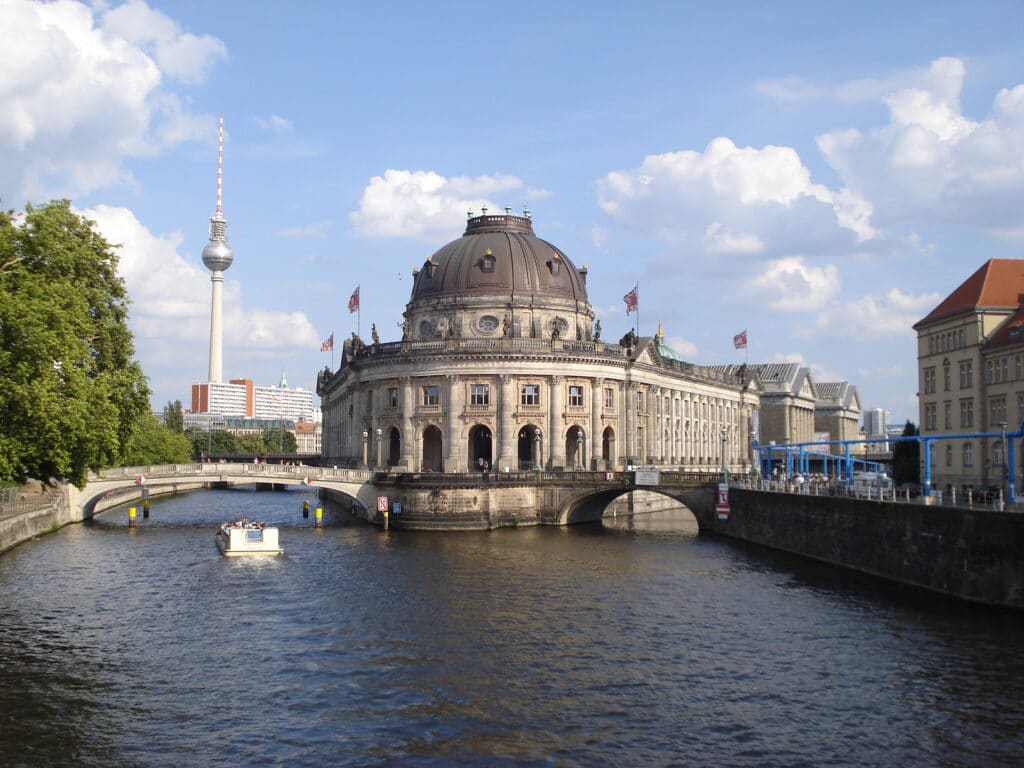
Upon reaching the western bank of the Spree, we followed its curve until we reached Friedrichstraße station. We arranged to meet Amadeos there and had a bite to eat somewhere close by while we waited.
Back at the station, Tobias and I agreed that it was time for another beer. Unsurprisingly, we were positioned within close distance of a Späti when this decision was made and so I stepped inside and picked up two bottles of Augustiner Helles.
Augustiner Helles
Widely regarded as one of the best lagers in the world, Augustiner Helles (“Hell” meaning “bright”…) is a traditional southern German pale lager prepared with all Bavarian hops and malt, and subjected to a long secondary fermentation that makes for a crisp, smooth, absurdly drinkable summer beer.
Founded in 1328, the Augustiner brewery is the oldest brewery in Munich and the last in private ownership. It is one of the few breweries out there with the capacity to operate its own floor maltings.
Down in the cellar, locally produced barley grains are spread out in thin layers on special stone slabs and turned mechanically, over and over again. This labour intensive process yields malt of the highest quality, which is exactly what you will taste before a subtle, hoppy bitterness sets in.
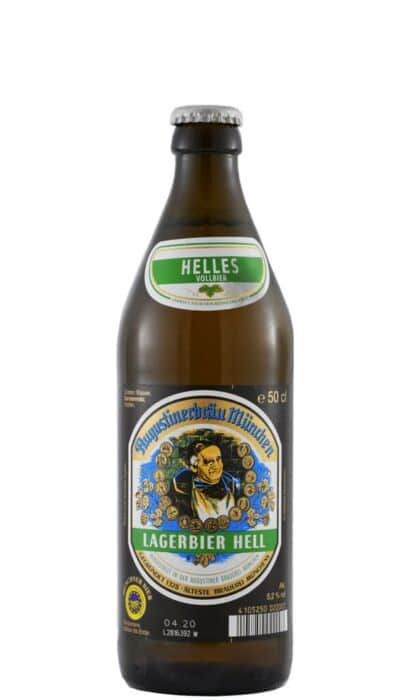
We could not help but drink quickly and were almost dry when Amadeos entered our sphere, where the smell of freshly cut Bavarian meadow prevailed. Firm and sincere Client Liaison-esque handshakes were exchanged and, intent on making up for lost time, Amadeos bade us to finish our beers. The sight of the Späti behind us was making him thirsty.
He returned with more Augustiner, now three in total, and we made our way back to the hostel at a leisurely pace, stopping for fresh pils whenever we saw fit.
A Night at the Mensch Meier
It was almost midnight when the stolid doorman of the Mensch Meier ushered three unshowered but drenched wayfarers turned Tina, Sabina and Amadeos inside with a sigh, muttering “Yeah, yeah…whatever.”
The place proved to be a relic of the once prominent Prenzlauer Berg squatter scene; no surprises there. They served beer of the type that does not deserve to be mentioned, the type that does not comply with the Reinheitsgebot.
Nevertheless, I can honestly say I thoroughly enjoyed my first exposure to My Bad Sister and Ostberlin Androgyn. A gentle reminder, courtesy of Berlin, that I should avoid being so judgemental.
Final Musings
The next day would proceed in similar fashion, albeit in a different part of the city. I could easily have reflected on that day as well, and I very well might at some point, but I do not expect further exemplification of my Berlin routine is required right now.
I merely felt that this day, the day in question, is noteworthy when considering some of the peculiarities of the pils that fuelled our little walkabout. Quite unwittingly, I had managed to sample the produce of Germany’s northernmost, most elevated, and oldest (in Munich, at least…) breweries, each of them outstanding in their own right, without even setting foot in a bar or restaurant.
There was no lack of ambience though – Berlin took care of that too.


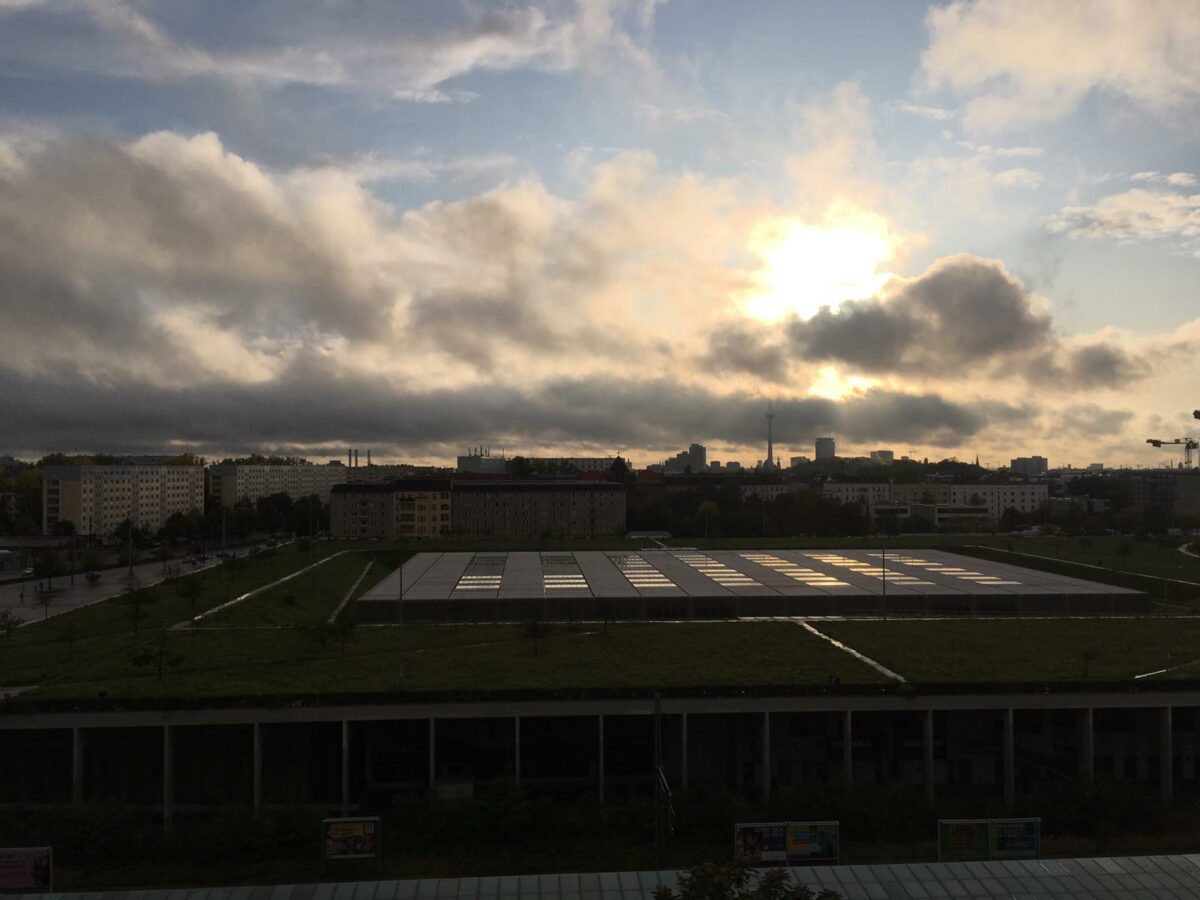
Leave a Reply